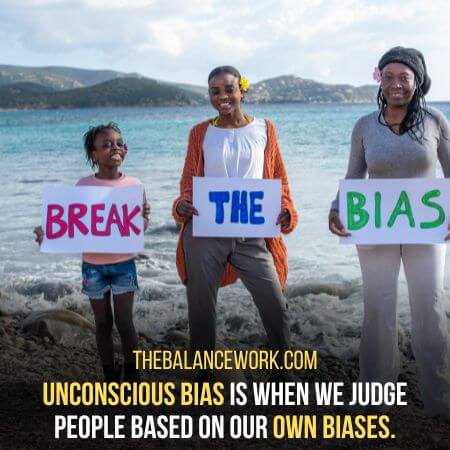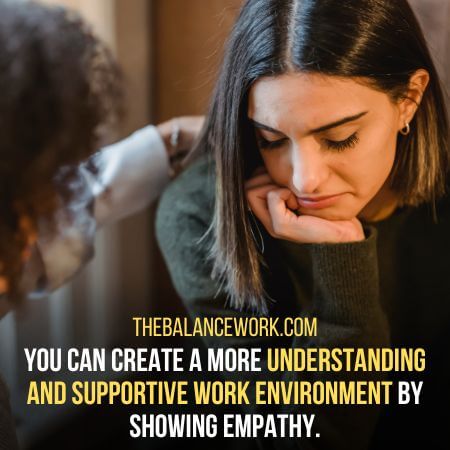Recently, racial equity has been a hot topic in the news, such as movements like #BlackLivesMatter. But what does that mean exactly? How can you promote racial equity in your workplace?
People are now talking about the need for racial equity in all aspects of life, including the workplace.
Promote Racial Equity In The Workplace – 7 Ways
Today we will discuss some ways that you can create a more inclusive and equitable work environment for everyone.
Equity vs. Equality:
The first step is understanding the difference between equity and equality.
Equality is treating everyone the same, regardless of race, gender, etc.
Equity is ensuring that everyone has what they need to be successful.
For example:
Equality would mean every student gets the same resources and opportunities in education.
Equity would ensure that every student receives the opportunities needed to be successful.
So, how can you promote racial equity in the workplace?
1. Educate Yourself And Others About Unconscious Bias:
We all have biases that we are not aware of. Unconscious bias is when we judge people based on our own biases.
These biases can be based on race, gender, age, etc.

We are not aware of these biases. They are ingrained in us from years of societal conditioning.
Throughout our lifetimes, we saw countless messages shaping our beliefs about certain groups.
These messages can be overt, like racist jokes. Or they can be subtle, like the media only portraying certain types of people in negative ways.
Either way, these messages impact how we see the world and the people in it.
The first step to promoting racial equity is to educating about unconscious bias.
There are many resources available online that can help with this.
One way to educate yourself is to take the Harvard Implicit Association Test.
This test measures your biases towards different groups of people.
It is important to remember that we all have biases and that they are not our fault.
The key is to be aware of them so that we can work to change them.
2. Make Sure Your Policies And Practices Are Fair:
The next step is to ensure that your policies and practices are fair.
This includes things like hiring, promotion, and performance reviews.
You want to make sure that you are not discriminating against any group of people.
There are many ways to do this.
2.1 Blind Hiring Practices:
One way to promote fairness is to use blind hiring practices.
This means that you do not see the name or photo of the person when you are reviewing applications.
This way, you can’t make any judgments based on these factors.
Many software programs can help with this.
One example is Jobvite’s Blind Hiring Feature.
2.2 Diverse Paneling Hiring:
This means having a diverse panel of people when reviewing and interviewing candidates.
This way, you will get a variety of perspectives on the candidate.
You can also use this opportunity to educate your panelists on unconscious bias.
2.3 Promote From Within:
When you are looking to fill a position, consider promoting from within.
Look at your current employees and seeing if there is anyone qualified for the position.
This is a great way to create more opportunities for underrepresented groups.
It is also an excellent way to show your employees that you commit to diversity and inclusion.
2.4 Use An Employee Resource Group:
An employee resource group (ERG) is a group of employees who share a common characteristic.
For example, there could be an ERG for women, people of color, LGBTQIA+ employees, etc.
ERGs can be a great resource when looking to fill a position.
They can help you identify qualified candidates. And they can provide insight into the needs of their community.

ERGs can also help with retention.
They provide a sense of community and belonging for such employees. They might feel like they are the only ones like them in the organization.
If you don’t have an ERG, you can consider starting one. There are many resources available to help with this.
2.5 Unbiased Language In Performance Reviews:
You want to make sure that you are not using biased language for performance reviews.
Here are some tips for writing unbiased performance reviews:
– Use gender-neutral language
– Avoid making assumptions about someone’s ability
– Focus on the person’s performance
Develop A Framework:
If you want to create lasting change, you need to develop a framework.
This means creating a set of guidelines or principles used to make decisions.
The framework should include the values of your organization.
For example:
Your organization values diversity and inclusion. Then your framework should be designed to promote these things.
The framework should help you achieve your goals.
It should be flexible enough to change as your organization changes.
And it should be something that all employees can understand and buy into.
Creating a framework is not easy. But it is necessary if you want to make lasting change.
3. Create A Diverse And Inclusive Work environment:
Creating a diverse and inclusive work environment is essential for two reasons.
First, it is the right thing to do. Everyone deserves to feel like they belong in their workplace.
Second, it improves business outcomes.
A study by McKinsey found that:
“Companies in the top quartile for racial and ethnic diversity are 35% more likely to have financial returns above their respective national industry medians.”
So, how do you create a diverse and inclusive workplace?
There are many things you can do. Here are a few ideas:
3.1 Encourage Employees To Be Their Authentic Selves:
Let employees be comfortable being who they are. There should not be any fear of discrimination or judgment.
This way, they are more likely to be productive and engaged. There are many ways to do this.
Some companies have dress code policies. They allow employees to dress in a way that expresses their individuality.
Others have started “bring your whole self to work” days. Employees share aspects of their personal lives with their colleagues.
3.2 Provide Inclusive Pay/ Benefits:
Make sure your pay and benefits are inclusive of all employees. Regardless of their marital status, gender identity, or sexual orientation, they should be.
This includes salary, health insurance, parental leave, and adoption assistance.
By providing inclusive benefits, your message is that you value all employees equally.
It is also essential to make sure that your benefits are affordable. This is especially important for employees who are living paycheck to paycheck.
There are many ways to make benefits more affordable. You can offer subsidies or discounts. You can also allow employees to pay for help with pretax dollars.
Making benefits more affordable will ensure that all employees can get them.
3.3 Celebrate Diversity:
Make sure to celebrate the diversity of your employees.
You can have events that celebrate different cultures or holidays.

You can also highlight the achievements of employees from underrepresented groups.
To celebrate diversity, to make sure your marketing and advertising materials are inclusive.
4. User-Centric Approach:
Many times, the people most affected by a problem are not consulted when it comes to finding a solution.
This is often the case with racial inequity in the workplace.
People of color are the ones who experience discrimination. Yet they are not always included in the conversation about how to fix it.
Instead, organizations often rely on a top-down approach.
Here the people in charge decide what to do without consulting those who are most affected.
A user-centric approach is different. In this approach, the people most affected by the problem help in finding a solution.
They can provide insights into what is happening and what to do.
This approach is more likely to result in a solution that works.
5. Be Transparent:
Organizations often try to keep negative information about themselves hidden.
They do not want their employees or the public to know about problems like racial inequity.
But this only makes the problem worse. It is essential to be transparent about the issue of racial inequity in the workplace.
This means being open and honest about what is happening.
It also means sharing information about what you are doing to address the issue.
You can build trust with your employees and the public by being transparent.
6. Empathy:
One of the most important things you can do to promote racial equity in the workplace is to show empathy.
This means understanding and sharing the feelings of others.
It is important to remember that everyone experiences racism differently.
What may seem like a small thing can be a big deal for someone else.
You can create a more understanding and supportive work environment by showing empathy.
Include empathy in all employees’ training.

Make sure they know how to listen and understand the experiences of others.
Empathy is the foundation of respect. And respect is essential for promoting racial equity in the workplace.
7. Be An Ally:
An ally is someone who supports a group of people who are not in the majority.
For example, white people can be allies to people of color. Men can be allies to women.
Allies use their privilege to help promote equality for all. Moreover, allies are an essential part of advancing racial equity in the workplace.
Organizations should encourage employees to be allies. And they should provide training on how to be an effective ally. Ways to do that are :
– Use your privilege to speak up when you see someone mistreated.
– Educate yourself and others about racism and its impact.
– Challenge racist attitudes and behaviors when you see them.
– Support employees from underrepresented groups.
8. Gather Feedback:
Get feedback from employees about their experiences with racial discrimination in the workplace.
You can do this through:
– Surveys
– Focus groups, or
– One-on-one interviews.
Listening to employees will help you understand the problem. Thus, you can find solutions that work. It will also show employees that you are promoting racial equity.
Make sure you take action on the feedback you receive. Otherwise, employees will not trust that you are serious about making a change.
Conclusion:
In conclusion, racial equity is an important issue. And there are many things organizations can do to promote it in the workplace.
You can create a more equitable work environment by following the tips above.
One that values and respects all employees. Moreover, one that is better able to meet the needs of a diverse workforce.
Last Updated on 2 years by Shahzaib Arshad
- Why Does My Boss Wink At Me? 6 Potential Reasons - October 5, 2023
- Is It Legal For Your Employer To Call Your Doctor? No, But… - October 4, 2023
- 12 Ways To Deal With A Low IQ Person - September 22, 2023